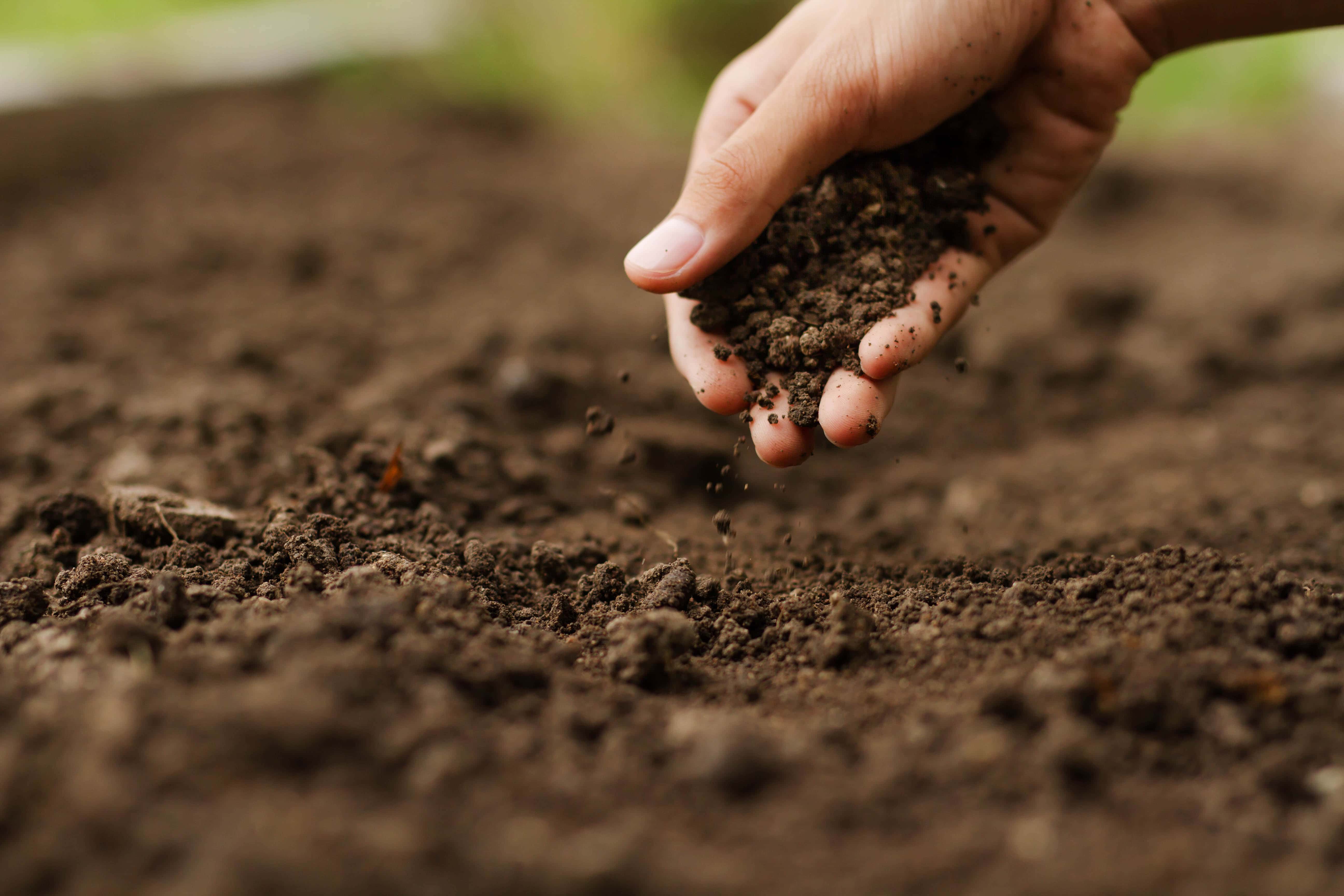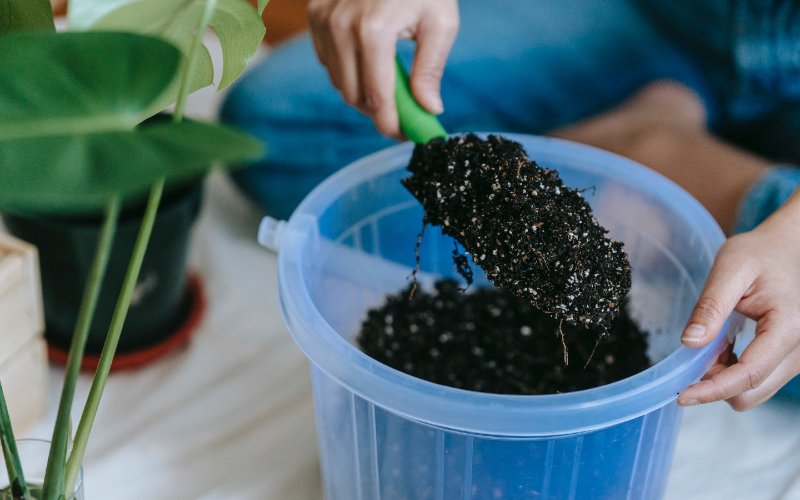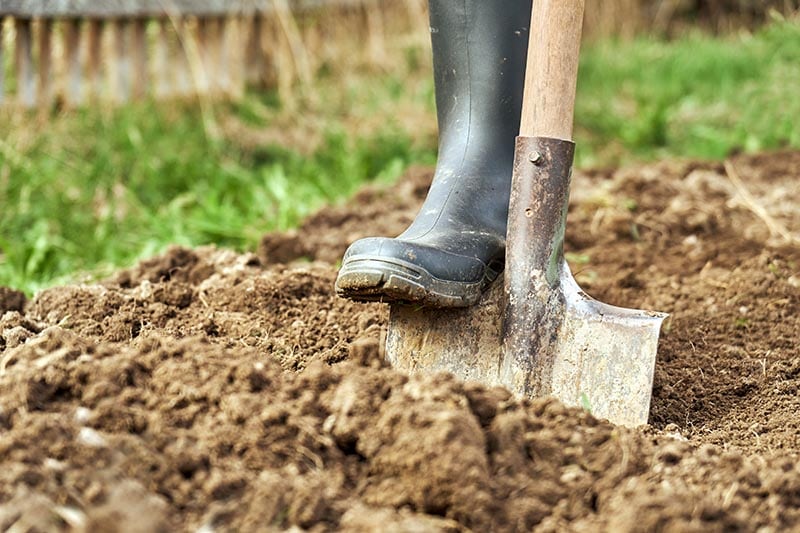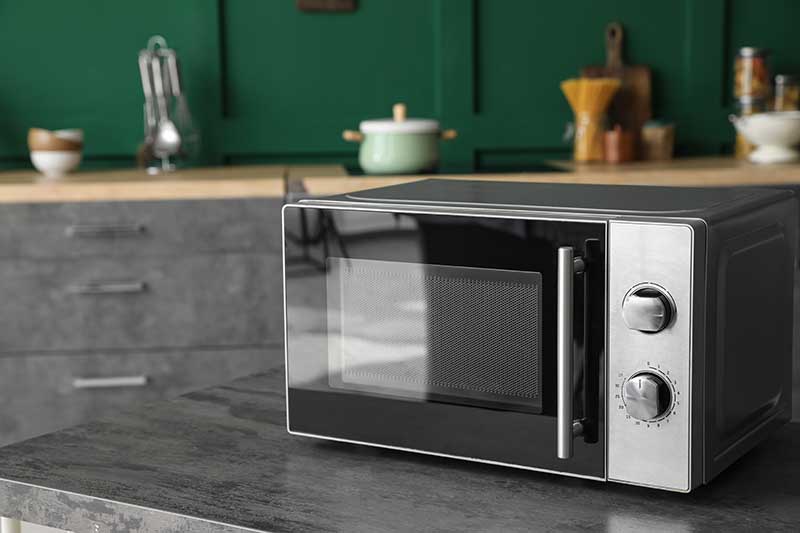What to Do With Old Potting Soil? 4 Ideas to Try
-
Brooke Bundy
- Last updated:

The first cool tingles of fall usher in pumpkins and chrysanthemums but spell the beginning of the end for most of our annual plants. You may be looking at all of the pots and containers on your porch that are currently hosting your fading flowers and wondering what to do with all of that potting soil—not to mention feeling a little guilty for how many bags you bought at the start of the growing season. If your plants were healthy until the end, with no signs of root rot, pests, or disease, then you can easily store the potting soil until next planting season and then mix in fresh nutrients before you plant something new. If the soil housed a diseased plant, however, the process is a little harder, but not impossible. Read on for more ways to reuse last season’s soil in the new year.
The 4 Ideas to Reuse Soil from Healthy Plants
1. Rejuvenate the Old Soil

Plants use all the nutrients in potting soil in a single growing season. Since the soil isn’t being replenished by decaying plants and organisms like it is in nature, you’ll need to add some nutrients yourself to keep the soil fertile. When you’re ready to reuse the soil, mix it with fresh potting soil or fertilizer. You could also mix one part compost with three or four parts of the old potting soil. If you’re not planning on reusing the soil until the spring, keep it sealed in a closed storage bin to prevent bugs and other critters from crawling in during its hiatus, and feed it when you’re ready to plant. Just make sure it’s fairly dry when you store it so that mildew doesn’t grow in the soil.
2. Toss It into Your Compost Bin
If you don’t want to bother with storing and fertilizing your soil for next year, you can simply throw it in your compost bin. It’s still helping out your garden, but you can start afresh with new soil in the spring.
3. Fill Holes

You can always use old potting soil to fill holes in your yard instead of buying dirt. Established garden beds that have already been fertilized may benefit from a little extra soil on top to counter gradual erosion.
4. Make a Terrarium
Take the garden inside for the winter with a homemade terrarium. Use the soil to support something that doesn’t require many nutrients, such as moss or succulents, and finish with a few accessories such as small rocks or fairy garden pieces. You can even use artificial plants in the soil if you wish.
What to Do If Your Plant Died from Disease
Annual plants are only expected to live until the end of their growing season, which is usually before winter’s worst bite. However, even perennial plants may perish without adequate nutrition, light, or water. There are a few ways to tell if your plant died from natural causes or was plagued with a pest.
Bugs are fairly obvious because you can see them, but diseases can be harder to detect. Red or white splotches on the leaves are a common sign of disease. A foul smell or darkened, brittle roots may be a sign your plant is infected with root rot, which is a fungal condition that’s almost always fatal to the plant.
If your plant does suffer from root rot, pests, or disease, you’ll want to be very careful if you plan on reusing the soil. Some gardeners prefer to throw it all away—plant, pot, soil, and all. Others sterilize the flowerpot and soil to use next year. Here are three ways you can sterilize old potting soil.
1. Store It in the Sunshine.
After making sure all the excessive moisture is drained away, dump the old potting soil in a large trash bag or sealable plastic container. Make sure it’s sealed, and then let it rest in the sunshine for 4-6 weeks. The heat from the sun should kill any bacteria and fungus and suffocate the bugs.
2. Microwave
If you have a ton of potting soil, this method may take quite a while, but it’s the quickest overall. You can pour the potting soil in a microwave-safe container and microwave it in 90-second batches to sterilize the soil. Once you’re finished, either store it in a sealed container for next year, or mix it with fertilizer, potting soil, or compost if you’re ready to plant again.

3. Bake
Try dumping the potting soil in a casserole dish and baking at a low temperature to kill any bugs or bacteria. However, you’ll want to closely monitor the temperature of the soil with a food thermometer to make sure it doesn’t exceed 200ºF. High temperatures can release pathogens in the soil, which isn’t good for you to breathe. Also, it’s worth mentioning that not all gardeners enjoy the earthy smell that lingers in your oven.
Conclusion
If you’re wanting to save a little money on next season’s gardening budget—or simply reallocate some of your budget to the fun part, plants—you can recycle your old potting soil using one of these methods. Remember that the nutrients have been depleted, so be sure to add some fertilizer or mix some compost with the old soil before using it to house your new plant. You’ll also need to be careful and sterilize the soil if the previous plant died from pests or disease so your next plant isn’t infected.
Featured Image Credit: Piyaset, Shutterstock
Contents

